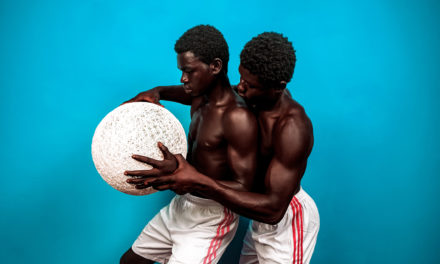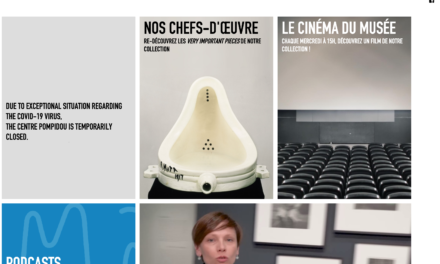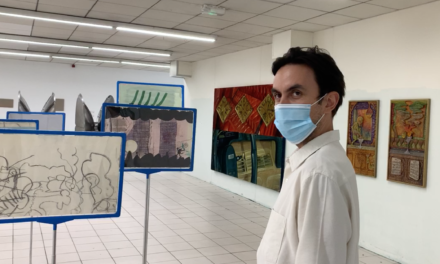The visionary Ambroise Vollard
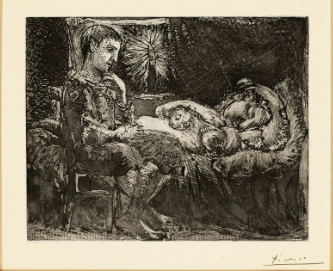
Pablo Picasso
Art history is fuelled by certain myths that ignite collectors’ imaginations. One of these is the “Vollard Suite”. The visionary Ambroise Vollard, one of the great dealers in the history of modern art whose triumphs included the rediscovery of Paul Cézanne and the championing of Picasso since 1901, had the idea to commission from the Malaga-born master, between September 1930 and March 1937, a series of 100 copper etchings which would go on to become the “Vollard Suite”.
The most beautiful etchings
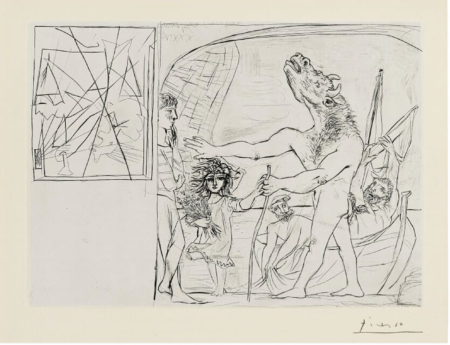
Pablo Picasso
A monumental work depicting subjects as diverse as the Minotaur, in eleven versions, or Rembrandt, in four versions, along with a portrait of Vollard himself. This was because the art dealer gave the Spanish master the freedom to do what he liked. The result is exceptional. According to Picasso’s biographer Pierre Daix “it contains dozens of Picasso’s most beautiful etchings, whose quality is only rivalled by those from his later years, after 1968” (1).
4.3 million euros
The etchings from the famous series are usually sold individually. But on 11 November 2019 in New York Christie’s auctioned the complete Vollard Suite in a set originally from an edition of 50, for 4.3 million euros. This is the absolute record price in the Picasso multiples field, according to the Artprice database.
Dora Maar: “La femme qui pleure”
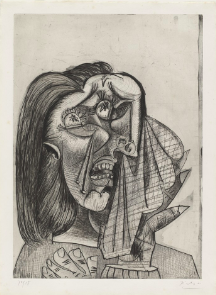
Pablo Picasso
Among the pantheon of values in this field, in 2015 a single proof, a drypoint etching most likely depicting an especially monstrous version of Dora Maar, which went down in history under the name of “La femme qui pleure” (The Weeping Woman), was sold for 4.1 million euros.
Guernica
The black and white artwork was created in 1937 and published in an edition of 15 and features one of the central figures in his “fresco” on the Spanish Civil War, Guernica. The weeping woman was produced in five states. The states are the different possible versions of the plate that served as a reproduction template, which Picasso reworked endlessly.
Using the different states
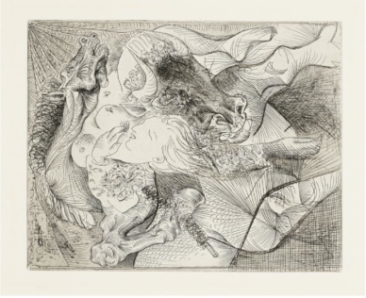
Pablo Picasso
People often – wrongly – consider etching, or printing more generally (printing encompasses all the artisanal reproduction techniques including lithography), to be the poor relation of drawing and painting. But Picasso knew how to play around with the technique. He composed, for example, using the different states.
Atelier Mourlot
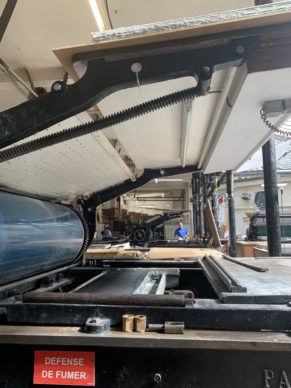
Item Edition studios
Jean Célestin was one of the lithographers from Atelier Mourlot who was charged with developing Picasso’s lithographs after 1945. He is cited by Fernand Mourlot (2) describing the example of a work started in 1945: “One day he started work on the famous bull. It was a superb, well-rounded bull. I thought to myself that that was that. But not at all. A second state and a third, still well-rounded, followed. And so it went on. But the bull was no longer the same… It began to get smaller and lose weight. Picasso was taking away rather than adding to his composition. He was carving away slices of his bull at the same time. And after each change we pulled a proof. He could see that we were puzzled. In the end, the bull’s head was like that of an ant. At the last proof there remained only a few lines (…). And to achieve his one line bull he had gone in successive stages through all the other bulls.”
34 etchings by Picasso
Christie’s is staging an online-only auction until 18 September featuring 34 etchings by Picasso, all in black and white, from a collection compiled over ten years.
Harald Hermann
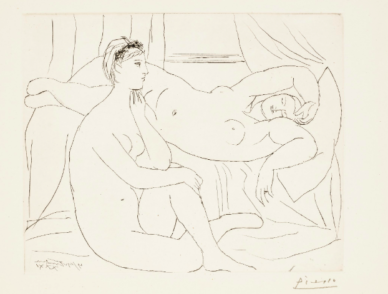
Pablo Picasso
They belong to Harald Hermann, CEO of a Californian food bank called Second Harvest. An unspecified amount from the product of the sale will be given to them. It contains several works from the Vollard Suite including “Garçon et dormeuse à la chandelle” from 1934, estimated at 18,000 dollars.
Richard Lloyd
“If you are interested in Picasso, you’ll have at least one work from the Vollard Suite,” observes the head of the prints department at Christie’s, Richard Lloyd.
Saltimbanques series
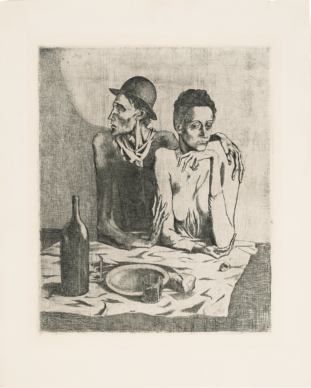
Pablo Picasso
The highest estimate, 100,000 dollars, is from another series released in 1913 by Ambroise Vollard: the “Saltimbanques”. With 250 copies, it features “Le repas frugal” which depicts two figures sitting in front of an empty plate with a miserabilist air typical of Picasso’s blue period.
Marie-Thérèse Walter
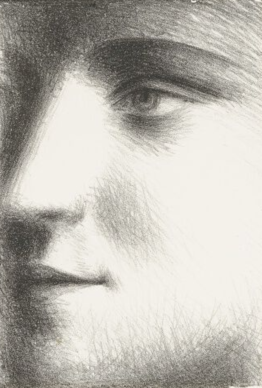
Pablo Picasso
One of the most graphically fascinating works in the sale features, in a pared-back style, the profile of Picasso’s then very young mistress, Marie-Thérèse Walter, in 1928 (estimate: 20,000 dollars). He met her a year earlier.
“Buying a Picasso print is a safe purchase, especially in the current period. However it’s better if it’s in an excellent state of conservation. We also need to distinguish between the different editions on different types of paper. The idea is to always verify the work in the catalogue raisonné of the artist’s prints,” explains Richard Lloyd.
Marc Lebouc
For Marc Lebouc, a great French specialist in this area who runs the gallery “La Bouquinerie de l’Institut” in Saint-Germain-des-Près, “the prices have been constantly going up since the 1980s, but there is less demand for works from Picasso’s early years, before 1930. Collectors are looking for decorative, recognisable pieces, preferably colourful, which can be hung up on the wall. There aren’t many Picasso fans who keep their prints in drawers anymore.”
The greatest number of prints
According to him, “Picasso is the artist who has produced the greatest number of prints in the 20th century. Even more than Andy Warhol, for example. We can count around 3000 made using various techniques, in copper, stone and linocut.” At La Bouquinerie de l’Institut the 200 works by Picasso they have in stock are on sale for between 5000 and 500,000 euros. He says they sell 90% of their prints internationally.
John Szoke
John Szoke in New York is also an eminent specialist in Picasso prints. “During the current period, business has slowed in the art market but there is still a strong demand for a big name like Picasso when it’s his rare production. And the exceptional pieces most often go through dealers. I sold a “Weeping Woman” for over 5 million dollars. It was then sold on to a museum.”
Item Editions
These days there are still a few traces of Picasso’s experimentations in printing in Paris. In Montparnasse, Item Editions run by Patrice Forest, who still produce lithographs in the traditional way for David Lynch and William Kentridge, have a press from Piero Crommelynck who printed Picasso’s last etchings. It was in this studio that Fernand Mourlot, Picasso’s lithographer, also worked. Here, time stands still.
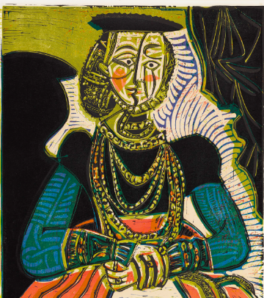
Pablo Picasso
Internet sale until 18 September. www.christies.com
On 20 and 21 October Christie’s in New York will also be selling a set of 40 polychrome prints by Picasso.
(1) Le nouveau dictionnaire Picasso.
(2) Picasso lithographe.
Support independent news on art.
Your contribution : Make a monthly commitment to support JB Reports or a one off contribution as and when you feel like it. Choose the option that suits you best.
Need to cancel a recurring donation? Please go here.
The donation is considered to be a subscription for a fee set by the donor and for a duration also set by the donor.

